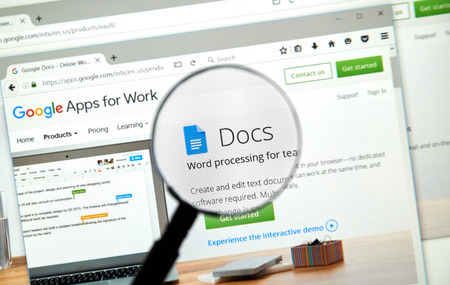3 Alternatives to Microsoft Office
 Many of us think of MS Office Suite as the only option for word processing, spreadsheets and presentations. However, open source software is changing that assumption for a growing number of small business owners. Some are looking for a free alternative to paid software products. Others prefer the idea that code should be shared, adapted and improved freely by everyone.
Many of us think of MS Office Suite as the only option for word processing, spreadsheets and presentations. However, open source software is changing that assumption for a growing number of small business owners. Some are looking for a free alternative to paid software products. Others prefer the idea that code should be shared, adapted and improved freely by everyone.
Read on to learn more about 3 free and viable alternatives to Microsoft Office, so you can decide if it’s worthwhile to make the switch.
1. Google Docs
Google Drive is a cloud-based storage service and is accessible on any device. It includes a powerful suite of document, spreadsheet and presentation tools. Although not as powerful as Microsoft tools for projects where detailed formatting is required, Google Docs, Sheets and Slides are steadily gaining popularity among business owners for whom real time collaboration is a priority.
Converting most file types to any Google format is no problem. The software also integrates seamlessly with other Google tools such as Gmail, GChat, Google+ and Google Calendar. Collaboration is as simple as sharing the link to your file. You don’t even need a Google account to use the software; as long as you have an internet connection, you’re in business.
2. Apache OpenOffice
One of the oldest open-source competitors to Office, this software suite allows you to create word documents, graphics, presentations, spreadsheets and even databases. OpenOffice stores data in an international open standard format that is compatible with Microsoft Word files. Writer, its word processing program, includes design wizards, a spell check and auto-correct tool, formatting and style features. It also supports tables and desktop publishing projects.
The OpenOffice tool set also includes:
- Calc, a spreadsheet application;
- Impress, a program for creating multimedia presentations;
- Draw, an image application for producing diagrams, 3D illustrations and more;
- Base, the program’s database tool; and
- Math, to create equations via a graphic user interface or the equation editor.
If you’re new to open source software, OpenOffice has an active community forum as well as guides, issue trackers and even a mailing list to ensure users understand how to make the most of its capabilities.
3. SoftMaker FreeOffice
This free office suite is offered as light version of the company’s regular product. It includes applications designed to compete with Microsoft’s word processing, spreadsheet and presentation software (called Textmaker, Planmaker and Presentations). Unlike some open source software, for which speed can be an issue, FreeOffice features some of the quickest loading times out there. It has an easy to use interface that further helps streamline efficiency and productivity. It’s also highly compatible with most document types and allows users to password protect files.
Final tips
Depending on your small business needs, open source software can be a great option. On the other hand, at times it can be a source of frustration. If you’re working on an older computer, open source might actually work better than the latest version of Microsoft Office. This is something to keep in mind if you’re not planning to upgrade your computer in the near future.
However, if email integration with Microsoft Outlook is important to you because you rely on it for email, calendar and other tools, switching may be too disruptive to your business to consider at this point. The same applies if you rely on Microsoft Word for highly technical formatting requirements, which Google Docs and other open source alternatives may not be well suited for.
